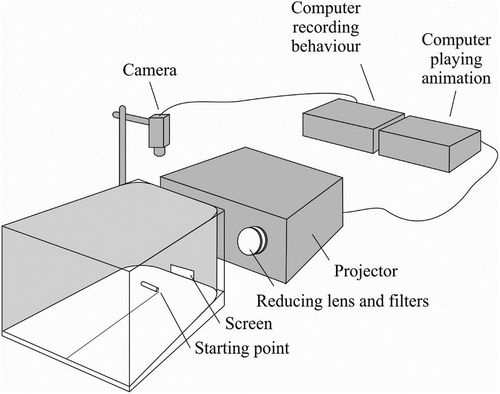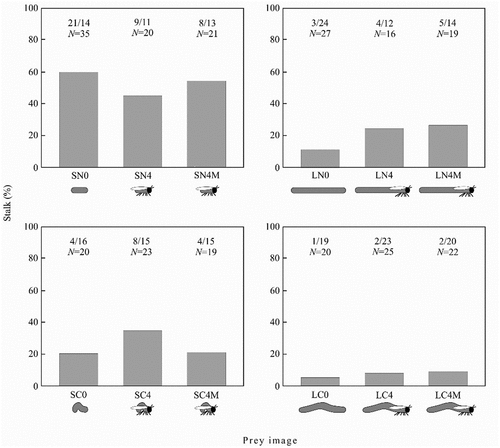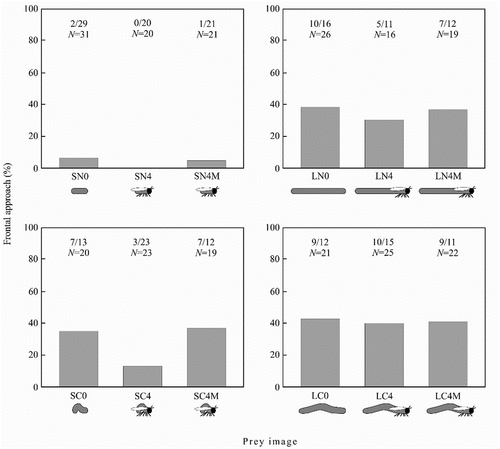Figures & data
Figure 1. Yllenus arenarius with its natural prey: A) fly, B) orthopteran, C) wasp, D) butterfly caterpillar.

Table I. The characteristics of images used in the tests: body length (short vs long); the presence of horizontal motion (images proceeding forward vs not proceeding); the type of global motion (crawling like a caterpillar vs moving without caterpillar-like crawls); the number of body details (0 vs 4 details, including head spot, legs, wings and antennae); the local motion of legs (legs moving vs legs still).



